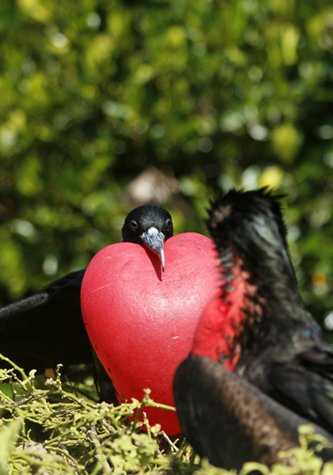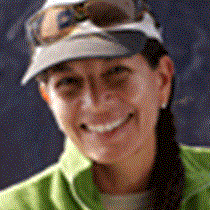Genovesa, also known by the English name of Tower, is one of the most pristine islands in the archipelago.
Frigate birds, red-footed boobies, Nazca boobies, swallow-tailed gulls, storm petrels, and tropicbirds are found in this small, low and brushy Island, but to get into Genovesa we have to cross a narrow, shallow underwater channel into the bay, which is a huge submerged caldera of this ancient dormant volcano.
Genovesa has two sites to visit: Darwin and Prince Phillip’s Steps. Darwin Bay beach site shows a flat area where swallowed tailed gulls and Nazca boobies nest, while red footed boobies and frigate birds nest on the bushes and trees. At this time of the year, it’s easy to see many great frigate birds displaying and showing their red balloons as they court the females, while many red footed boobies are incubating eggs or making their nests. Birds are everywhere and this sometimes is an overwhelming experience, like today.
After the walk, we had our last snorkel outing along the base of the cliffs of Darwin Bay, where many species of fish are found, sometimes for the first time for our guests. It is also not rare to see here other larger creatures such as spotted eagle rays, golden rays, or even better, scalloped hammerhead sharks! After such an experience we head back to the ship to find some young red-footed boobies lying on the handrails of the decks, with their very naïf and curios behavior.
In the afternoon we visited the site known as Prince Philip's Steps, after the Duke of Edinburgh. The trail goes up a narrow fissure for a steep climb to the cliff-top hike along fairly level terrain of old, cracked lava. We went through a Palo Santo Forest to a storm petrel colony, passing boobies and frigates along the way, and on the outside border of the cliff, we spent a good time observing the huge colony of storm petrels and the fascinating diurnal hunting behavior of the short eared owls, that here prey on the storm petrels nesting on the cracks of lava.
After the walk and just before coming back onboard we went for a Zodiac cruise along the base of the cliffs to look for fur seals and other species of birds, such as the Galápagos shearwaters, yellow crown night heron and the always beautiful red billed tropic birds.
In the evening of our last night we enjoyed the captain’s farewell toast and the experiences and memories of our guests. This was a good week, a week where we saw everything we wanted to see, a week of learning and understanding the complex and non-ending process of life and a week of a life-changing experience for many of our guests.









